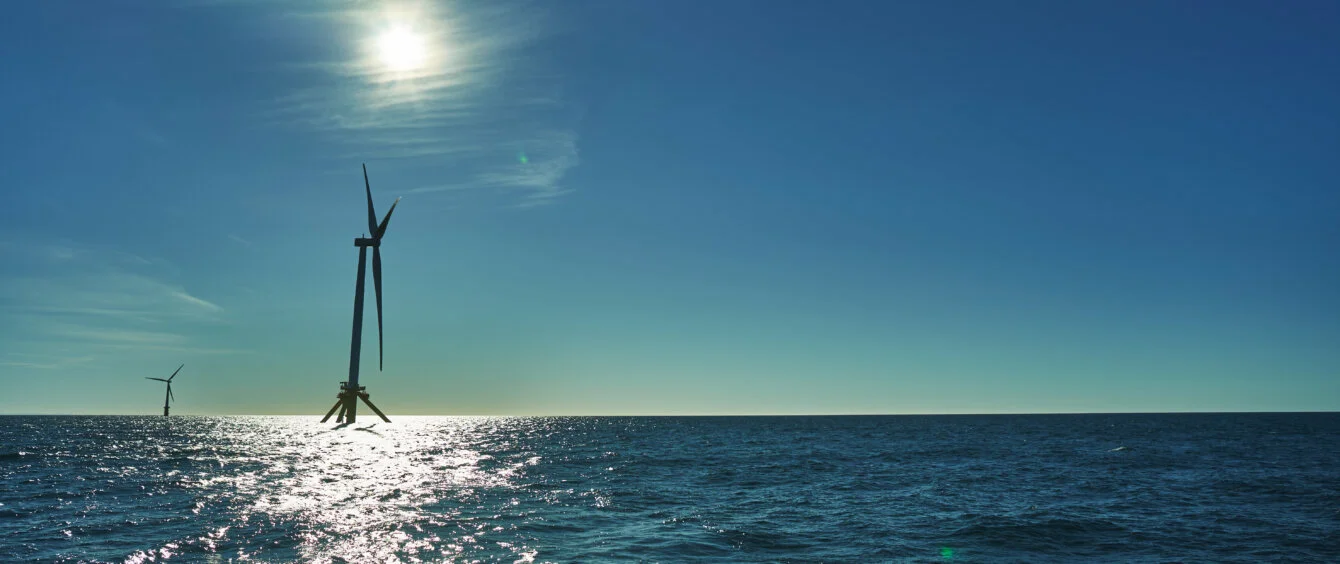10 GW by 2030 is an ambitious target for a country with only 25 MW of offshore wind currently in operation. However, Portugal intends to forge ahead with its first offshore wind tender by the third quarter of this year, getting underway a potentially transformational process.
Portugal already has one of the highest ratios of renewable electricity generation in Europe. Such is the potential of its offshore wind resource in relation to its overall power demand that offshore wind, in combination with the country’s other renewable energy resources, could position Portugal as one of Europe’s greenest countries and one of its first hydrogen exporters.
Offshore wind potential in perspective
Portugal has long sought to harness the energy potential of its long and turbulent Atlantic coastline. Numerous wave energy devices have been investigated over the years, but now the country is turning to offshore wind.
The country’s sea beds for the most part fall steeply from shore, but it does have potential for conventional fixed-bottom installations. In fact, an estimate of the country’s offshore wind potential provided by the Global Wind Energy Council puts the country’s conventional offshore wind resource at 14 GW and its floating offshore wind potential at 117 GW.
Both estimates are large in comparison with the size of the country’s electricity demand. The UK, for example, generated 35.5 TWh of electricity from 11 GW of offshore wind capacity in 2021. This was in fact a poor year for wind – less capacity generated over 40 TWh in 2020.
In comparison, Portugal consumed a total of 44 TWh generated from all sources in 2022.
Wind speeds, consistency and capacity factors all vary, but the comparison suggests that developing Portugal’s conventional offshore wind capacity alone could pretty much meet the country’s entire electricity needs. Output would also vary by season, but UK data again shows that even taking seasonal variation into account, offshore wind provides year-round generation at substantial levels.
Imagine then if Portugal also exploited even a portion of its floating offshore wind resource, which in the UK has demonstrated exceptional performance in terms of capacity factors.
From green to greenest?
In 2022, Portugal used no coal at all and generated 57% of its electricity from renewable sources. This is particularly impressive considering that drought heavily affected hydro output last year. Reservoir levels were restored in the final quarter of last year following heavy rainfall.
Electricity generation by source in mainland Portugal in 2022
in percent, source: APRENOnshore wind, solar and biomass made up the rest of the country’s clean power production. The remaining generation came from fossil fuel-fired Combined Heat and Power and natural gas-fired power plants. Gas is imported primarily as Liquified Natural Gas (LNG), but also by pipeline from Spain as Portugal has no domestic fossil fuel production of its own.
On the basis of 2022, the country would only have to generate about 19 TWh from offshore wind to achieve full power sector decarbonisation on an annual basis. Onshore wind, solar and hydro capacity will also expand.
Companies are adding new capacity. RWE Renewables, for example, expects to complete a 44 MW solar farm in Portugal this year, part of a number of clean energy developments the company is engaged in on the Iberian Peninsula.
Surplus power and variable supply and demand
Surplus renewable electricity seems perfectly possible on an annual basis and a near certainty at times of high renewable generation and low demand.
In practice, Portugal will have to manage a considerable amount of supply and demand variation both short-term and seasonally. This will require storage technologies and other options such as increased interconnector capacity, demand-side management and potentially hydrogen production.
A 1 GW interconnector with Morocco is under assessment. Portugal already has six electricity interconnections with Spain. Typically an exporter, the country saw net power imports from Spain in 2020 and 2021. Although its direct interconnector capacity is limited, in future it should benefit from increased gas and power connections between Spain and France, which would allow renewable energy to flow from the Iberian Peninsula to demand centres in Europe’s north.
Portugal's electricity trade with Spain
average annual values, in megawatts, source: 2007-2020 Ersa, 2021 RENOffshore wind tender set for Q3
Plans for a 3-4 GW offshore wind tender in 2022 were postponed to this year, but the amount of capacity on offer was increased to between 6-8 GW. Floating wind projects are expected to make up some of the bids. Portugal’s only offshore wind farm today is a 25 MW floating wind farm.
In September 2022, the environment minister upped the stakes again, promising a 10 GW auction. In February, Economy Minister Antonio Costa e Silva said the tender would take place in the third quarter of this year, with the aim of having 10 GW up and running by 2030.
Starting from a low base means that offshore wind will probably not contribute to the government’s target of 80% renewable electricity generation by 2026, but this could still be achieved based on the country’s onshore programme of renewable energy developments.
However, by 2030, offshore wind could be making a substantial contribution. Portugal could position itself as a hydrogen producer, marking a complete turnaround in its energy balance from fossil fuel importer to green power and gas exporter.
